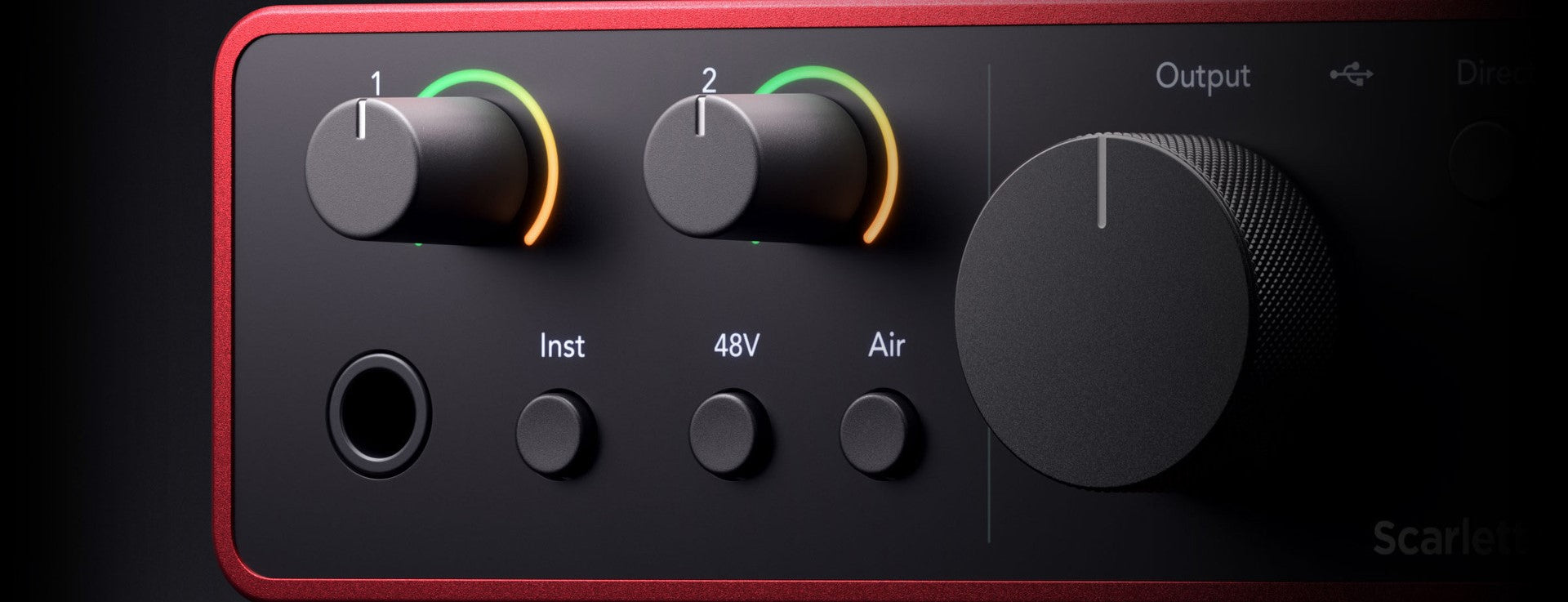How To Get the Perfect Tone on Your Guitar
Tone is one of the most challenging things to create when playing guitar. Maintaining one is vital to making your sound heard amongst all the noise. Many novice players make the mistake of assuming there is a simple one-size-fits-all solution that works for all genres and situations, but anybody with experience can tell you that this isn’t true.
In fact, there are many different elements that go into the production of your tone. Finding the right combination will help your playing remain distinct from the rest of the band. Here are our top tips for how to get the perfect tone on your guitar.
Establish a Baseline
The first thing to do when trying to find your tone is to establish a baseline on your amp. Begin by setting all the dials on your amp to the 12 o’clock position and begin to play. From there, you can start to move the dials to find your preferred settings. You should only turn one knob at a time before testing the new sound. This method helps you hear what each change does, allowing you to find your tone easier.
Discover Your Own Settings
Depending upon the genre and style of music you play, there are many different recommendations for the settings for the treble, mid, and bass knobs. The problem with these suggestions is they fail to account for factors such as the room size, the other musical instruments, and other ambient noise.
It’s important to know what the three main knobs mean. The treble is how much high-end sound the amp produces, with more treble meaning a sharper sound. Mids control the mid-range frequency in your music. Low mids create a “scooped” sound that is difficult to hear when other instruments are in the sound mix, while a higher mid setting is much more full-bodied. Finally, the low-end sound is the bass, with lower settings making the instrument sound thin.
Select Your Picks
Finding the right style of pick for your playing is also very important when discussing how to get the perfect tone on your guitar. There are many different types of guitar picks available for every style of music, so you can continue testing them until you find one to match your desired tone. Different gauges are better for various plaything methods. For example, lighter gauges are better for strumming, but heavier picks are often better for picking single notes. It is completely normal to use multiple picks throughout a set based on what you are playing.
Amp Location
The location of your amp also plays a crucial role in the tone of your guitar. Minor adjustments to things like angle, height, and distance can ultimately morph the instrument’s sound. This is very important during recording sessions because slight modifications to the position of the amps can affect how the microphones pick up the sound. Even the surface the amp is sitting on can change how you hear the guitar. Play around with locations until you find one that creates the tone you desire.
Organize the Pedal Board
Your pedal board is one of the best ways to define your unique sound as a guitarist, including your tone. Much like the notes you play, certain pedal effects sound better when you place them in a specific order. Some pedals offer a feature called true-bypass switching, which allows the signal to pass through the pedal without causing any signal-chain noise, but they can interfere with the treble frequencies. It’s also important to remember that the more pedal effects you have, the more cables are required.
Cable Management
And speaking of cables, you cannot overstate the importance of proper cable management. More wires that are running around, the higher the chances of tripping or damaging gear. Keep cables to a minimum and try to ensure they remain covered whenever possible. The condition of the cords also impacts your guitar’s tone. Replace worn cables with quality ones designed to maximize your sound. The wires are essential for high-end gear because any sounds and tones a well-built guitar can make become ruined by poor wiring that can’t transfer the noise properly.
Pickup Selection
Another important feature on the guitar itself that can impact the tone is the pickups. While changing them on the fly may not be possible, you do have the ability to quickly change their height. This is an effective method for easily fine-tuning the output level. In general, you can generate more output with higher pickups. You can even use this to make slight adjustments to bass and treble levels as well. It is important to remember not to move the pickups too close to the strings because this can create interference. On the flip side, you don’t want them too low because this can inhibit them from sensing the string vibrations.
Fresh Strings
Finally, think about the strings you are playing on when trying to perfect your tone. There are several different variations to the strings that can all impact the tone, including the material, the type of winding, and gauge of the guitar strings.
There are many different materials that can make up a guitar string, including steel, nickel, brass, bronze, and nylon. This genre you play typically decides the material you should use. There are also several different methods of winding that impact the sound. For example, flat-wound strings are popular for jazz musicians, and rock guitarists prefer round-wound for extra articulation. The gauge of the guitar string is how thick the string is. The thicker the string, the warmer the sound and higher the volume, while thinner strings are typically easier to play and brighter.
At Yandas Music, we know how frustrating it can be when you want to find the perfect tone. Our expert team knows all the tips and tricks to help you achieve this goal. We offer many professional guitars for sale along with the amps, cables, pedals, and other equipment you need to create your ideal sound. Check out our online store or stop at one of our shops today for more information.




